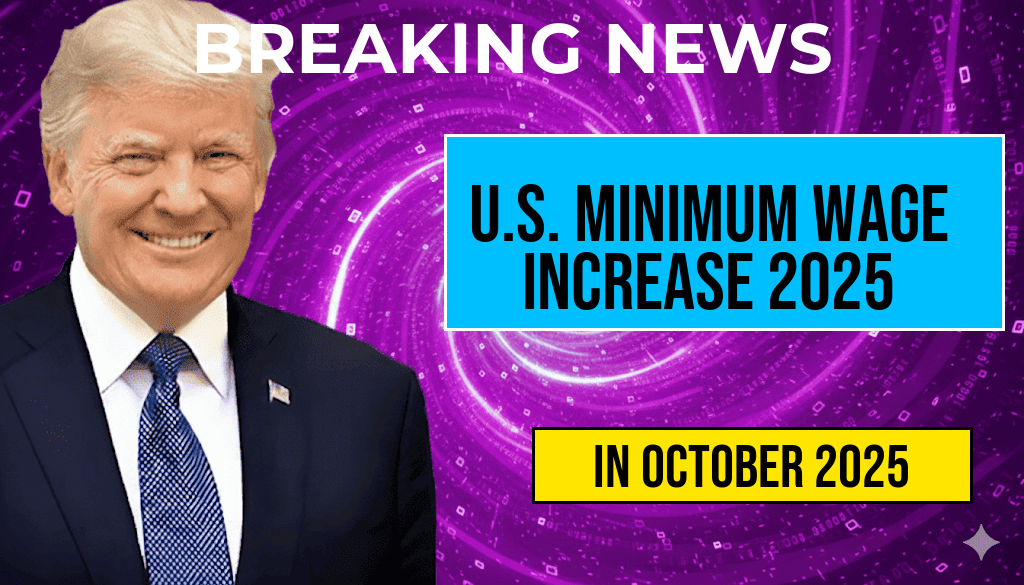The United States is set to see an increase in the federal minimum wage effective October 4, 2024, with the new hourly pay rate rising from $7.25 to $8.25. This adjustment marks the first federal minimum wage increase in over a decade, reflecting ongoing debates around living wages and economic recovery efforts. While the federal baseline applies primarily to workers in states without their own minimum wage laws, many states and localities also implement higher standards, which may result in varied pay rates across the country. The federal increase aims to provide additional income support for low-wage workers amidst rising inflation and living costs, though it has ignited discussion among policymakers, business leaders, and workers about its broader economic impact.
Details of the 2025 Federal Minimum Wage Increase
Background and Context
The last federal minimum wage hike occurred in 2009, when it was raised from $6.55 to $7.25 per hour. Since then, inflation and economic disparities have prompted calls for a more substantial increase. The upcoming adjustment is part of a broader legislative effort to address wage stagnation, with proponents arguing that raising the federal baseline can help reduce poverty levels and promote economic stability.
The new rate will be applicable to federal contractors, certain subcontractors, and in states where the minimum wage is below the federal standard. Many states and cities have their own legislation, often setting higher minimum wages, which means some workers may see increases well above the federal baseline.
Impacted Workers and Sectors
- Federal Contractors: Companies holding federal contracts are mandated to pay at least the new minimum wage, ensuring workers involved in government projects benefit from the increase.
- Low-Wage Employees in Non-California States: In states without higher minimum wages, workers will see their pay rise to the new federal minimum.
- Various Sectors: Retail, hospitality, and service industries, which often rely on minimum wage workers, are expected to experience the most immediate impact.
State and Local Minimum Wage Variations
| State | Minimum Wage | Notes |
|---|---|---|
| California | $15.50 | Higher than federal, scheduled to increase annually |
| New York | $14.20 | Varies by region; New York City higher |
| Texas | $7.25 | At federal minimum; no state-specific increases planned |
| Florida | $11.00 | Scheduled to increase to $12.00 in 2025 |
Economic Implications and Policy Debate
Supporters of the wage increase argue that even a modest rise can improve quality of life for millions of workers, reduce reliance on social welfare programs, and stimulate local economies through increased consumer spending. According to the Congressional Budget Office, raising the federal minimum wage could lift thousands out of poverty but might also lead to increased labor costs for some employers, potentially affecting hiring practices and hours worked.
Opponents contend that higher wages could pressure small businesses, leading to layoffs or increased automation. Some economic studies suggest that significant increases might suppress employment opportunities, especially for entry-level workers. Policymakers continue to debate the balance between wage growth and employment levels, emphasizing the importance of regional economic conditions and industry-specific factors.
Looking Ahead: Implementation and Future Changes
The new federal minimum wage will become effective starting October 4, 2024, with enforcement agencies updating wage standards accordingly. Employers across the country are advised to review their payroll policies to ensure compliance. The change reflects a broader trend of states and localities reconsidering minimum wage laws, with several jurisdictions already planning future increases aligned with inflation or cost of living adjustments.
For further details on minimum wage laws and ongoing legislative efforts, resources such as Wikipedia’s comprehensive overview and Forbes analysis provide valuable insights into the evolving landscape of wage policies across the country.
Frequently Asked Questions
What is the updated minimum wage rate for 2025 in the U.S.?
The U.S. minimum wage for 2025 has been increased and is effective starting October 4. The new hourly pay rate varies by state, but it reflects the latest federal and state adjustments to ensure fair compensation for workers.
When does the new minimum wage rate take effect?
The updated minimum wage becomes effective on October 4, 2024, allowing employers and employees to prepare for the new pay rates ahead of the 2025 calendar year.
How does the wage increase vary across different states?
The wage increase varies depending on state laws and regional economic conditions. Some states have set higher minimum wages than the federal level, reflecting local living costs and economic factors.
Who is affected by the 2025 minimum wage increase?
The minimum wage increase impacts hourly workers across various industries, especially those earning close to the minimum pay. It aims to improve living standards and reduce economic disparities.
Are there any exceptions or specific rules related to the new minimum wage?
Yes, certain exemptions may apply based on worker classification, employer size, or industry-specific regulations. It’s important for both employers and employees to review applicable state and federal laws for detailed information.

Leave a Reply